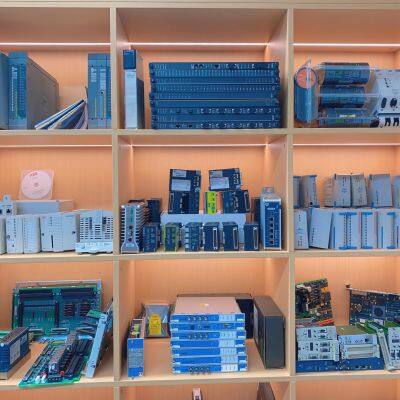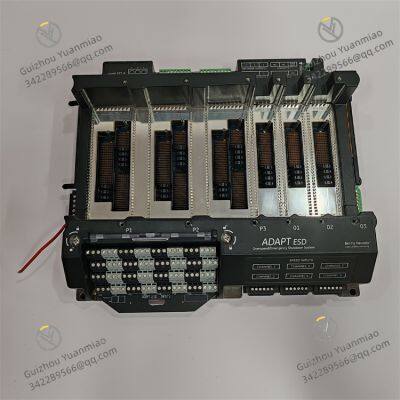Product Description
I. Overview
BENTLY 289761-01 is a monitoring module, and its products are widely used in industries such as electric power, petroleum, and chemical engineering. This module is mainly used for real-time monitoring of the operating status of rotating machinery. By collecting key parameters such as vibration, displacement, and rotational speed of the equipment, it provides accurate data support for equipment fault diagnosis and predictive maintenance, thereby ensuring the safe and stable operation of rotating machinery and reducing losses caused by equipment failure shutdowns.
II. Technical Parameters
(1) Physical Specification Parameters
Dimensions: The overall design is compact. Although the specific dimensions are not clear, from its application scenarios, it can be well installed on the control cabinet or monitoring panel of mechanical equipment without occupying too much space, facilitating integration with other monitoring equipment and systems.
Weight: It is light in weight, making it convenient for installation and transportation. During equipment installation and maintenance, it can reduce the labor intensity of staff and improve work efficiency.
Shell Material: It is made of durable metal material, which has good impact resistance and corrosion resistance. It can protect internal electronic components in the complex environment of industrial sites and extend the service life of the module.

(2) Power Supply Parameters
Power Supply Voltage: DC power supply is usually adopted, and the common power supply voltage range may be 18-32VDC. This voltage range can adapt to the power supply systems of most industrial sites, ensuring that the module works stably under the condition of small voltage fluctuations.
Power Consumption: The power consumption is low, which meets the requirements of industrial energy conservation. At the same time, it reduces the heat generation of the module itself, which is conducive to maintaining the stable operation state of the module.
(3) Monitoring Parameter Range
Vibration Monitoring: It can monitor a wide range of vibrations and capture vibration signals of rotating machinery under different operating conditions, including low-frequency vibration and high-frequency vibration. The vibration measurement accuracy is high, which can meet the strict requirements of equipment condition monitoring.
Displacement Monitoring: It can monitor parameters such as shaft displacement of rotating machinery. The displacement measurement range can be adjusted according to actual application needs to ensure accurate reflection of the axial movement state of the equipment.
Rotational Speed Monitoring: It can monitor the rotational speed parameter of the equipment. The rotational speed measurement range covers the normal operating speed of most rotating machinery and can reflect the change of the equipment's operating speed in real-time.
(4) Environmental Adaptability Parameters
Operating Temperature Range: The operating temperature range is wide, generally able to work normally between -40°C and +70°C. It can adapt to extreme industrial environments such as high temperature and low temperature, and maintain stable monitoring performance under different temperature conditions.
Humidity Adaptability: It can operate in an environment with a relative humidity of 5%-95% (non-condensing). Through special moisture-proof treatment, it effectively prevents the impact of humid environment on the internal circuit of the module and is suitable for humid industrial places.
Anti-interference Performance: It has strong anti-electromagnetic interference ability, can accurately collect and transmit monitoring data in the environment with various electromagnetic interferences in industrial sites, and ensure the reliability of monitoring results.
Vibration Resistance: Through special structural design, it has certain vibration resistance, can maintain stable work in the vibration environment generated by the operation of rotating machinery, and avoid module failure caused by vibration.

(5) Communication and Interface Parameters
Communication Interface: It is equipped with common industrial communication interfaces, such as RS-485 interface, which facilitates data transmission and communication with upper computers, monitoring systems or data acquisition equipment, and realizes centralized management and analysis of monitoring data.
Signal Output Interface: It has an analog output interface, which can convert the monitored parameters into standard 4-20mA analog signals for output, facilitating connection with other control systems or display instruments to realize real-time display and control of data.
Communication Protocol: It supports industrial standard communication protocols such as Modbus, which can seamlessly connect with monitoring equipment and control systems of different brands, improving the compatibility and expandability of the system.
III. Functional Features
(1) High-precision Monitoring Ability
Accurate Data Collection: It adopts advanced sensing technology and signal processing algorithms, which can collect parameters such as vibration, displacement, and rotational speed of rotating machinery with high precision, ensuring the accuracy and reliability of monitoring data and providing a strong basis for equipment status evaluation.
Real-time Monitoring: It can monitor the operating status of the equipment in real-time, with fast data update speed, and can timely capture abnormal state changes of the equipment, providing early warning information for timely maintenance of the equipment.
(2) High Reliability and Stability
Durable: It uses high-quality components and durable shell materials, and has passed strict quality inspection and environmental testing. It can operate stably for a long time in harsh industrial environments and reduce the occurrence of module failures.
Redundant Design: Some key circuits may adopt redundant design. When a certain circuit fails, the redundant circuit can automatically switch to work, ensuring that the module will not stop monitoring due to a single point of failure, and improving the reliability of the system.

(3) Convenient Integration and Operation
Easy to Integrate: Due to its compact structure, standard communication interfaces and communication protocols, it can be easily integrated with existing monitoring systems and control systems, reducing the complexity and cost of system construction.
Simple Operation: The setting and parameter adjustment of the module are simple. Users can configure it through special software or operation panels without complex professional knowledge, which is convenient for on-site staff to use and maintain.
(4) Perfect Fault Diagnosis Function
Abnormal Alarm: When it is monitored that the parameters of the equipment exceed the set threshold, the module can send out an alarm signal in time to remind the staff that the equipment may be faulty, so that measures can be taken in time for treatment.
Data Recording and Analysis: It can record and store monitoring data, provide historical data support for equipment fault diagnosis and trend analysis, help technicians analyze the changes in the operating status of the equipment, and predict possible faults of the equipment.
(5) Wide Application Fields
Electric Power Industry: It can be applied to the condition monitoring of rotating machinery such as steam turbines and generators, timely Discovered potential faults of equipment, and ensure the safety and stability of power production.
Petroleum and Chemical Industry: It plays an important role in the monitoring of pumps, compressors, fans and other equipment, ensuring the continuous progress of petroleum and chemical production processes and reducing production interruptions caused by equipment failures.
Metallurgical Industry: It is used for monitoring rotating machinery such as rolling mills and motors, improving the operational reliability of equipment and ensuring the smooth development of metallurgical production.


Woodward 8402-271 Speed Regulator
Woodward 8511-144 Actuator Governor Control Module
Woodward 8440 - 1923 A Generator Set Controller
WOODWARD 8200-1301 505 Digital Speed Regulator
WOODWARD 9907-163 Digital Turbine Controller
WOODWARD 8440-2087 Relay Module
WOODWARD 5466-1035 Controller Module
WOODWARD 8256-021 Speed control module
WOODWARD SPM-D2-11 Synchronizer Module
WOODWARD 8290-195 Electric Speed Controller
WOODWARD 9908-201 Hydraulic hose assembly
WOODWARD 8407-523 Gas Controller Valve
 yezi
Hi there! Welcome to my shop. Let me know if you have any questions.
yezi
Hi there! Welcome to my shop. Let me know if you have any questions.





